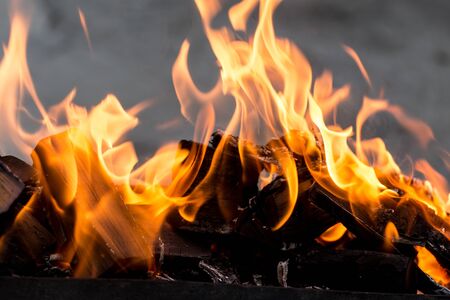Essential Gear for Vegetarian Campfire Cooking
When it comes to vegetarian campfire cooking, having the right gear can make all the difference. Whether youre roasting veggies over an open flame or simmering a hearty stew, using tools that are both fire-safe and functional is key. Heres what you’ll need to cook up delicious plant-based meals in the great outdoors.
Must-Have Cookware
The heart of any successful campfire kitchen is quality cookware that can handle high heat and rugged conditions. Here are a few essentials:
| Cookware | Description | Why It’s Great for Vegetarians |
|---|---|---|
| Cast Iron Skillet | Heavy-duty pan perfect for grilling, sautéing, and frying over open flames. | Excellent heat retention and ideal for searing vegetables or cooking veggie burgers. |
| Fire-Safe Pot or Dutch Oven | Thick-walled pot designed for direct fire or coal cooking. | Great for soups, stews, lentils, and pasta dishes packed with veggies. |
| Grill Grate | A metal grate placed over the fire pit to grill food directly. | Perfect for grilling corn, zucchini, bell peppers, and even tofu skewers. |
Eco-Friendly Food Storage
Sustainability is important when cooking in nature. Choose food storage solutions that keep your ingredients fresh without harming the environment:
- Silicone Reusable Bags: Ideal for marinating veggies or storing pre-chopped ingredients.
- Bamboo or Stainless Steel Containers: Durable and non-toxic alternatives to plastic containers.
- Beeswax Wraps: A natural way to wrap produce or leftovers without using plastic wrap.
Additional Tools That Make a Difference
Don’t forget these helpful extras that make vegetarian campfire cooking easier and more enjoyable:
- Long-Handled Tongs & Spatula: Essential for flipping grilled veggies safely over hot flames.
- Heat-Resistant Gloves: Protect your hands while handling hot cookware or adjusting logs in the fire.
- Cutting Board & Sharp Knife: Prepping fresh produce at your campsite is easier with quality tools.
Packing Tip
Create a dedicated “camp kitchen box” where you store all your essential vegetarian cooking tools. This keeps everything organized and ready to go when adventure calls!
Quick Checklist: Vegetarian Campfire Cooking Gear
- [ ] Cast Iron Skillet
- [ ] Fire-Safe Pot/Dutch Oven
- [ ] Grill Grate
- [ ] Reusable Food Storage Bags/Containers
- [ ] Long-Handled Tongs & Spatula
- [ ] Heat-Resistant Gloves
- [ ] Cutting Board & Knife Set
With the right gear in your backpack, you’re all set to whip up wholesome, satisfying vegetarian meals right by the campfire. Stay tuned as we dive into techniques and recipes in the next section!
2. Campfire Cooking Basics and Safety Tips
Before diving into delicious vegetarian campfire recipes, it’s important to understand the basics of building a proper campfire and staying safe while cooking outdoors. Whether youre camping in a national park or your own backyard, these fundamentals will help ensure your meals are both tasty and safely prepared.
How to Build a Safe and Effective Campfire
The foundation of great campfire cooking starts with a well-built fire. There are different types of campfires, but for cooking purposes, you’ll want one that provides steady heat without too much flame.
Popular Campfire Types for Cooking
| Campfire Style | Description | Best For |
|---|---|---|
| Teepee Fire | Logs arranged like a teepee to start the fire quickly. | Starting fires quickly, boiling water |
| Log Cabin Fire | Logs stacked in a square pattern around kindling. | Consistent heat for cooking meals |
| Star Fire | Logs laid out like spokes of a wheel; pushed inward as they burn. | Long-lasting fires, conserving wood |
Tips for Maintaining Your Cooking Fire
- Use hardwoods: Oak, hickory, and maple burn longer and provide better coals than softwoods.
- Create a coal bed: Let your fire burn down until you have glowing coals—perfect for even cooking.
- Avoid flare-ups: Keep flames low when cooking directly over the fire to prevent burning your food.
- Add wood gradually: Don’t overload the fire; add small amounts of wood as needed to maintain heat.
Campfire Cooking Safety Tips Every Camper Should Know
Cooking outdoors can be fun and rewarding, but safety should always come first. Here are some essential safety practices to follow:
- Check local regulations: Some parks may have fire bans or restrictions. Always check before lighting a fire.
- Choose a safe location: Use established fire rings or build your fire at least 15 feet away from tents and trees.
- Keep water nearby: Always have a bucket of water or sand within reach in case you need to put out the fire quickly.
- Never leave your fire unattended: Even for a minute. Fires can spread fast if not monitored.
- Extinguish properly: Douse the fire with water, stir the ashes, and douse again until cold to the touch.
Gear Essentials for Safe Campfire Cooking
Packing the right tools makes all the difference in both safety and ease of cooking. Here are some must-haves for vegetarian campfire chefs:
| Tool | Description |
|---|---|
| Fireproof Gloves | Protect your hands when handling hot pots or grill grates. |
| Casting Iron Skillet or Dutch Oven | Perfect for sautéing veggies or baking over coals. |
| Grill Grate | Sits over the fire for direct grilling of vegetables or veggie burgers. |
| Tongs and Long-Handled Utensils | Keeps your hands safe from heat while flipping or stirring food. |
| Cowboy Coffee Pot or Kettle | Makes hot drinks or boils water safely over the fire. |
A little preparation goes a long way when it comes to cooking around the campfire. By understanding how to build your fire correctly and taking safety seriously, you’ll be ready to enjoy flavorful vegetarian meals under the stars with confidence.
![]()
3. Packing and Prepping: Vegetarian Ingredients that Travel Well
When it comes to vegetarian campfire cooking, smart packing is key. Whether youre heading out for a weekend getaway or a multi-day backcountry adventure, choosing ingredients that are both nutritious and travel-friendly can make all the difference. The goal is to pack items that stay fresh without refrigeration, are lightweight, and require minimal prep work at the campsite.
Top Plant-Based Ingredients That Hold Up Well
Here’s a list of vegetarian staples that are perfect for camping. These items don’t need constant refrigeration and have a longer shelf life, making them ideal for outdoor cooking:
| Ingredient | Why It’s Great for Camping | Storage Tips |
|---|---|---|
| Canned Beans (black beans, chickpeas, etc.) | Ready to eat, protein-rich, versatile | Store in a dry place; bring a can opener |
| Nut Butters (peanut, almond) | High in healthy fats and calories | No need for refrigeration; choose no-stir options |
| Whole Grains (instant rice, quinoa, oats) | Quick-cooking and filling | Keep in sealed containers or zip bags |
| Root Vegetables (sweet potatoes, carrots) | Durable and great for roasting over fire | No fridge needed; store in cool, dark area |
| Dried Fruits & Nuts | Perfect trail snack or meal topper | Airtight bags or jars work well |
| Hardy Fresh Produce (cabbage, bell peppers, zucchini) | Last longer than leafy greens; great for grilling | Wrap in paper towels to absorb moisture |
| Tofu (shelf-stable vacuum-packed) | Excellent plant-based protein option | No refrigeration needed until opened |
Prepping at Home to Save Time at Camp
A little prep before you hit the road can go a long way. Here are a few ideas to make your campfire meals easier and faster:
- Pre-chop vegetables: Store them in airtight containers or reusable silicone bags.
- Create spice blends: Mix your favorite seasonings ahead of time in small jars or baggies.
- Measure out grains or pancake mix: Label each portion for quick use at camp.
- Marinate tofu or veggies: Do this at home and store them in leak-proof containers to soak up flavor.
No-Fridge Sauces & Condiments Worth Bringing
| Sauce/Condiment | Use Ideas |
|---|---|
| Sriracha or Hot Sauce Packets | Add heat to wraps, stews, or grilled veggies |
| Tahini | Makes quick dressings or drizzle over roasted vegetables |
| Soy Sauce Packets or Coconut Aminos | Add umami flavor to stir-fries or rice bowls |
| Pesto (shelf-stable variety) | Toss with pasta or spread on bread for sandwiches |
Pro Tips for Better Ingredient Management on the Trail
- Keep dry goods separate: Use labeled stuff sacks or clear bins to organize ingredients.
- Avoid overpacking: Plan your meals so you only bring what youll actually use.
- Add freshness with herbs: Bring hardy herbs like rosemary or thyme; they last longer without refrigeration.
Packing smart means less stress and more time enjoying the outdoors. With these vegetarian-friendly ingredients and tips, youll be ready to whip up delicious meals right by the campfire—no cooler required.
4. Easy and Delicious Vegetarian Campfire Recipes
Cooking vegetarian meals over a campfire can be just as satisfying—and even more fun—than traditional camping food. Whether youre feeding a group or cooking for two, these easy and tasty recipes will keep everyone happy around the fire. From foil-packet favorites to hearty stews and grilled veggie treats, there’s something for every camper to enjoy.
Foil-Packet Veggie Meals
Foil packets are a campfire classic. They’re simple to prep, easy to clean up, and allow for tons of creativity. Just wrap your ingredients in heavy-duty aluminum foil and place them over hot coals.
| Recipe | Main Ingredients | Tips |
|---|---|---|
| Campfire Veggie Medley | Bell peppers, zucchini, mushrooms, red onion, olive oil, garlic | Add Italian seasoning and a sprinkle of parmesan (or vegan cheese) before sealing the packet. |
| Sweet Potato Black Bean Packets | Cubed sweet potatoes, black beans, corn, red pepper, cumin, lime juice | Top with avocado slices and hot sauce after cooking for extra flavor. |
Hearty Campfire Stews
If you have a cast iron Dutch oven or a sturdy pot, stews are perfect for chilly nights by the fire. Theyre filling, flavorful, and easy to make with whatever veggies you have on hand.
One-Pot Lentil Stew
- Ingredients: Green lentils, carrots, celery, diced tomatoes, garlic, vegetable broth, thyme
- Directions: Combine all ingredients in the pot and simmer over low heat for 30–40 minutes until lentils are tender.
Coconut Curry Chickpea Stew
- Ingredients: Chickpeas, coconut milk, curry powder, spinach, sweet potato cubes, onion
- Directions: Sauté onions first if possible; then add remaining ingredients and simmer until the veggies are soft.
Grilled Veggies and Skewers
You can’t go wrong with grilled vegetables. They’re fast to cook and packed with smoky flavor. Use metal or soaked wooden skewers for kabobs—or grill large pieces directly on a grate.
Favorite Grilled Combos:
- Zucchini + cherry tomatoes + bell peppers + tofu cubes (marinate in soy sauce & garlic)
- Mushrooms + red onion + pineapple chunks (brush with teriyaki glaze)
Fun Vegetarian Campfire Snacks
Satisfy your cravings between meals with fun snacks that are easy to prepare fireside.
| Snack Idea | Description |
|---|---|
| Cinnamon Apple Foil Packets | Sliced apples with cinnamon, brown sugar, and a pat of butter wrapped in foil—cook until soft and bubbly. |
| Smores with Dark Chocolate & Banana Slices | A twist on the classic: swap milk chocolate for dark and add banana for extra gooey goodness. |
| Corn on the Cob with Chili-Lime Butter | Wrap corn in foil with seasoned butter; roast directly on coals for a spicy-sweet treat. |
These vegetarian recipes make it easy to enjoy plant-based meals while embracing the rustic charm of campfire cooking. Mix and match ideas based on what you like—and don’t be afraid to get creative!
5. Tips, Tricks, and Campfire Hacks for Herbivores
Cooking vegetarian meals over a campfire can be just as exciting and satisfying as traditional options—if not more! With a little planning and the right techniques, you can simplify your setup, clean up in no time, and pack bold flavors into every bite. Here are some easy-to-follow tips and creative hacks to level up your plant-based campfire cooking game.
Streamline Your Camp Kitchen Setup
Keeping your camp kitchen simple and organized will save you time and stress. Heres what you need:
| Essential Item | Why You Need It |
|---|---|
| Cast Iron Skillet or Dutch Oven | Great for high-heat cooking directly over the fire. |
| Cutting Board & Sharp Knife | Prep veggies easily at the campsite. |
| Reusable Containers | Store pre-chopped ingredients or leftovers without waste. |
| Foldable Table | Adds workspace without taking up much room. |
| Dishwashing Tub & Biodegradable Soap | Makes cleanup eco-friendly and efficient. |
Clever Cooking Hacks for Big Flavor
You don’t need meat to create mouthwatering meals. Use these tricks to bring out bold tastes in your dishes:
- Create Herb Bundles: Tie fresh rosemary, thyme, or sage together with twine and toss them onto hot coals under your grill grate for natural herb-infused smoke.
- Spice Mixes on Hand: Pre-mix your favorite spice blends in small jars before your trip—think taco seasoning, curry powder, or Cajun spice for quick flavor boosts.
- Citrus Zest & Juice: Brighten up grilled veggies or foil-pack meals with lemon or lime zest. A quick squeeze of juice right before serving adds zing!
No-Fridge Flavor Boosters
If you’re camping without a cooler, these shelf-stable items are perfect for building complex flavors:
| Pantry Staple | Taste Profile |
|---|---|
| Soy Sauce or Tamari | Savory umami depth for stir-fries or marinades |
| Nutritional Yeast | Creamy, cheesy flavor perfect for pasta or popcorn |
| Canned Coconut Milk | Adds richness to curries and soups |
| Sriracha or Hot Sauce | A spicy kick for wraps, tacos, or tofu scrambles |
No-Mess Cooking Methods
The less mess you make, the more time you’ll have to relax around the fire. Try these low-fuss techniques:
- Foil Pack Meals: Wrap chopped veggies, beans, spices, and olive oil in foil; cook directly on hot coals for an all-in-one meal with zero pans to wash.
- Bamboo Skewers: Pre-soak skewers at home and load them up with marinated veggies or tofu for tasty kabobs that cook fast and clean up easy.
- Parchment Paper Inside Foil: Layer parchment inside foil packs to prevent food from sticking while also reducing aluminum contact.
Simplify Cleanup Like a Pro
No one wants to spend their camping night washing dishes. Here’s how to keep it quick and easy:
- Cook One-Pot Meals: Stews, soups, and skillet meals cut down on dishes big time.
- Lining Pans with Foil: Helps reduce stuck-on food and speeds up cleaning.
- Ditch Disposable Everything: Bring reusable plates, utensils, and cups—less trash means less cleanup overall.


